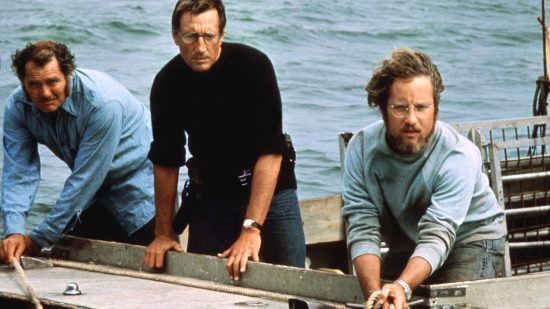One of the most notorious problem-ridden sets in movie history is that of Jaws – utter chaos presided over by a foolhardy 27-year-old Steven Spielberg. Most people know that Bruce the shark was the cause of most of the issues, but this all stemmed from Spielberg’s insistence that the shark movie be filmed in the real Atlantic Ocean instead of in a giant swimming pool.
Waiting for the mechanical shark to start functioning was only one of the things delaying Jaws, much more common was having to wait for the tides and weather conditions to be right in order to film at sea with constantly moving parts. And at one stage, the Orca (where the entire finale takes place) sank. In an extensive excerpt from the upcoming book Spielberg: The First Ten Years published by Vanity Fair, Spielberg explains what happened.
“A problem we had was when a speedboat pulling the Orca went too fast and pulled out the planking from the hull – water rushed in, and the boat sank in about two minutes. I remember vividly the moment where the actors were yelling, ‘Send boats, get us out, send boats!'”
The actors weren’t the only things in jeopardy – both the sound and the camera departments were in major peril; “Our sound mixer John Carter – who shared an Oscar with his team for Jaws – picked up the Nagra recorder, held it over his head, and said, ‘Fuck the actors, save the sound department!’ I have this image to this day of John sinking, holding his recorder, with water up to his ankles, and then to his knees, while crews on boats were scrambling to pull everybody off the sinking Orca. Months later, he was holding an Oscar in those hands!”

The camera being destroyed, along with its footage, would have caused another major set-back, and Spielberg may never have recovered; “The camera was on the boat, too, and it went underwater. Our director of photography Bill Butler said; ‘You know, in a sense, the developing solution we use is saline, and I think the film will be okay if we can rush it to the lab, and as long as we keep it in saltwater.’ We had big buckets of saltwater and kept the magazines of film in there—they were sent to our lab in New York, and they successfully saved the negative.”
Check out our guide to the best adventure movies and the best Steven Spielberg movies.
